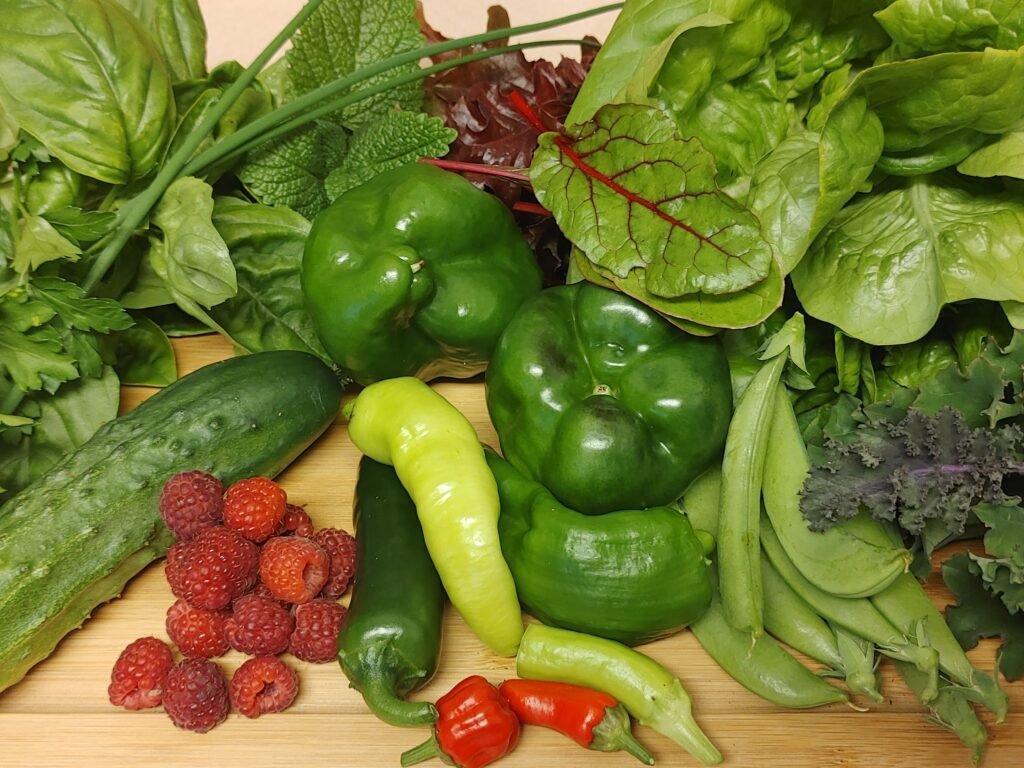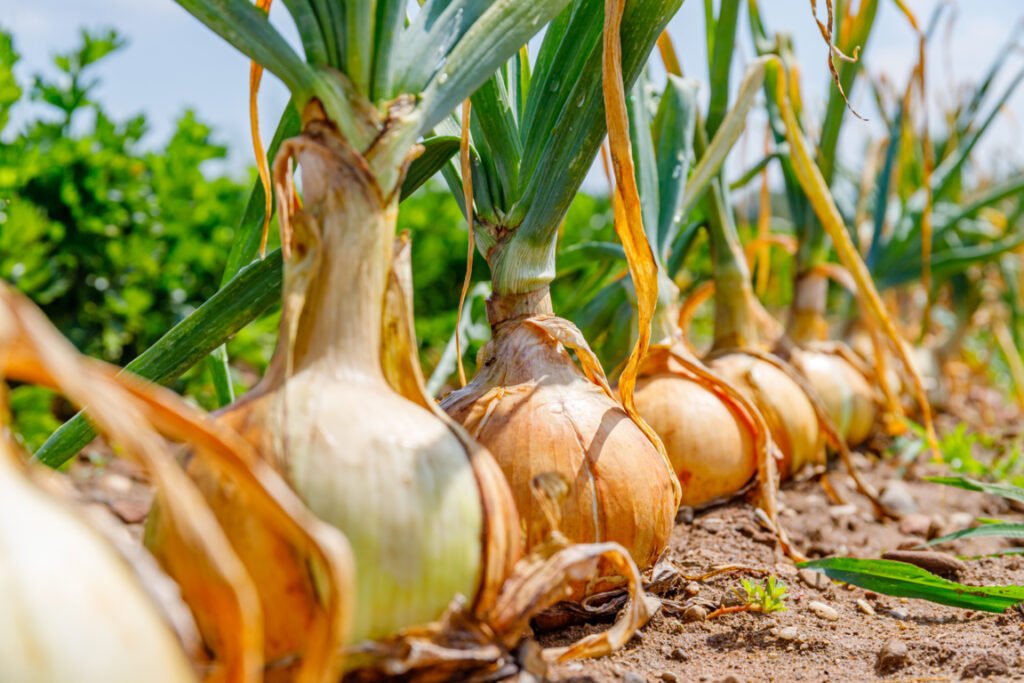Are you a proud chameleon owner who wants to create the perfect habitat for your scaley friend? Well, let me tell you, there’s more to it than just a fancy cage and some crickets.
Many chameleon owners overlook the importance of live plants in their pet’s habitat. Not only do plants provide an excellent source of hydration for chameleons, but they also offer a place for them to climb, hide and feel secure. But with so many options out there, it can be daunting to know where to start.
I’ve compiled a list of these top 5 best plants for chameleons, including why they are best plants for veiled and panther chameleons and the best indoor plants and live pot plants for your scaly baby.
So, let’s get started on creating your chameleon’s home into a lush paradise they’ll love to explore!
How to Pick the Best Plant for Your Chameleon
Here are a few things to consider when picking the best indoor plants for your chameleon:
First, you’ll want to ensure the plant is safe for your chameleon to consume. Some plants are poisonous to chameleons, so it’s essential to do your research beforehand.
Secondly, you’ll want to consider the size of the plant. Chameleons are known for their climbing abilities, so a taller plant will give them something to climb and explore.
Thirdly, you’ll want to choose a plant that has dense foliage. This will give your chameleon plenty of space to hide and feel safe.
Fourth, you should ensure the plant leaves are large enough for your chameleon to grip onto. Smaller leaves can be a challenge for them to grasp onto and may cause them stress.
Fifth, you’ll want to avoid plants with sharp edges or pointy leaves. These can injure your chameleon if they fall or try to climb on them.
Finally, you’ll want to select a plant that is easy to care for. Chameleons are sensitive creatures and require specific care, so choosing a low-maintenance plant will help simplify things for you.
Let’s take a look at the five best plants for chameleons.
1. Pothos
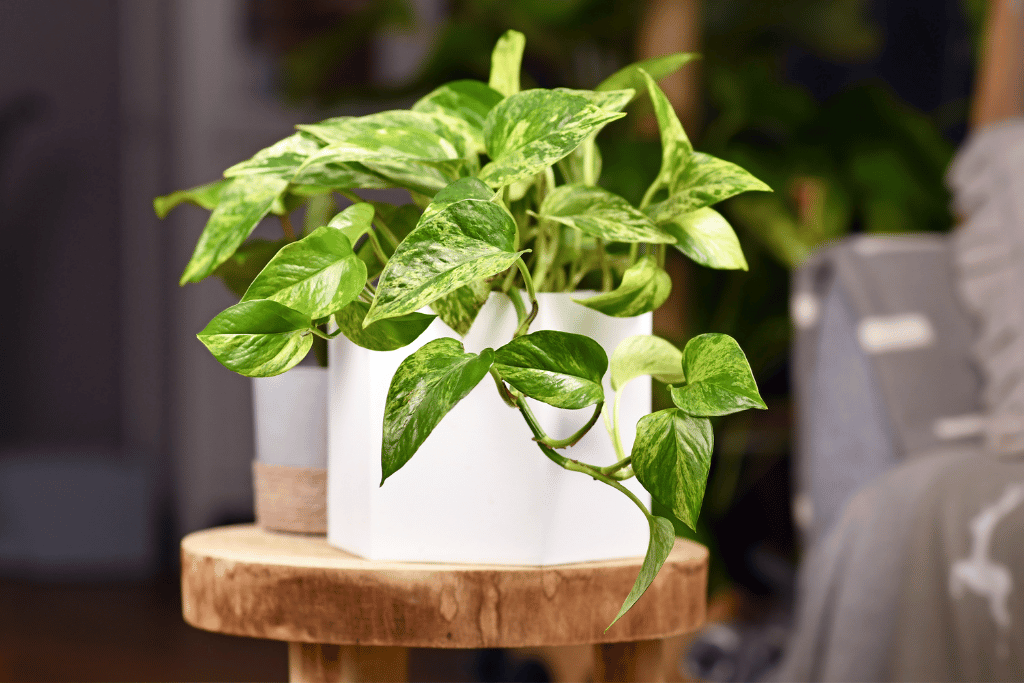
Pothos is not only one of the best plants for veiled chameleons because they are straightforward to care for, but they provide a lot of cover for your chameleon. They are hardy vines that can withstand the weight of the chameleons and are very forgiving if you forget to water them.
These rainforest plants help to increase the humidity levels in the chameleon’s enclosure, which is vital for maintaining their health. Chameleons require a high level of humidity to keep their skin healthy and prevent dehydration.
Because chameleons are arboreal creatures that spend much of their time in trees and other high places, having a natural climbing surface helps to promote natural behaviors and prevents boredom.
Pothos is a non-toxic plant for chameleons and other pets, making them a safe choice for your scaly friend’s home. This is important because chameleons are known to be curious creatures that like to explore their environment.
2. Ficus

Ficus trees are a popular choice for chameleons as they allow plenty of places to climb and hide. Be sure to choose a safe variety for your chameleon to eat, as some types can be toxic.
One of the most commonly used ficus varieties for chameleon enclosures is Ficus benjamina, also known as the weeping fig. This plant is native to Southeast Asia and Australia and is known for its attractive shiny leaves and ability to tolerate various light conditions.
Ficus benjamina is a non-toxic plant that is one of the best live plants for chameleons because it is safe and won’t do any harm if they take nibble. Generally, Ficus benjamina has a natural climbing habit, but it can be pruned as a standard tree depending on the shape you desire.
Another ficus variety that is safe for chameleons is Ficus elastica, also known as the rubber plant. The rubber plant is known for its large, glossy leaves and its ability to tolerate low-light conditions.
Ficus elastica is also non-toxic and safe, making it one of the best plants for panther chameleons and their other relatives.
Another safe Ficus variety for chameleons is Ficus pumila, also known as the creeping fig. It’s native to East Asia and is known for its small heart-shaped leaves and its ability to climb and cover walls and other surfaces.
When it comes to caring for Ficus trees, they require regular watering and misting, so be prepared to do some extra work if you choose this type of plant. They’re also great for regulating humidity levels, which is essential for the chameleon’s skin care.
3. Dracaena
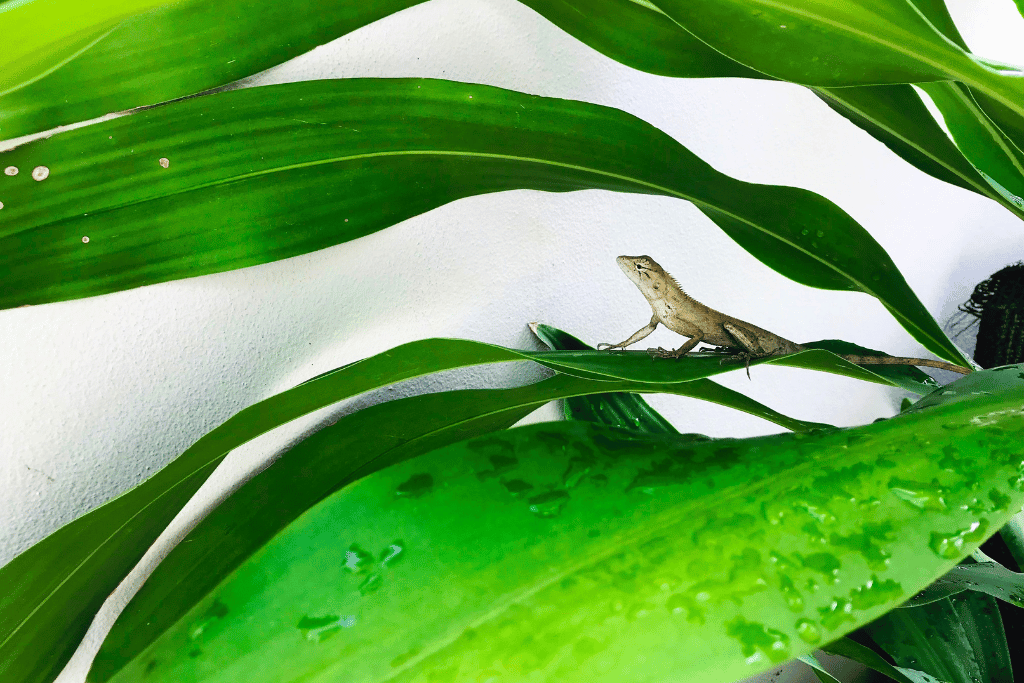
Dracaena is a genus of plants that includes a variety of species, many of which are commonly grown as houseplants. They are native to tropical Africa and Asia and are known for their attractive spiky leaves and easy-to-grow nature.
Some varieties of Dracaena are safe for chameleons to have in their enclosure and can provide several benefits. Common types of Dracaenas to look out for are Dracaena marginata, Dracaena fragrans, and Dracaena deremensis.
Dracaena plants are great for chameleons for several reasons. Firstly, they provide a sturdy natural climbing surface for chameleons to perch on. Chameleons love to position themselves in a high place to bask in the light and feel secure.
Secondly, like other plants, dracaena assists in the humidity levels in the enclosure. In fact, the more plants you group together, the higher the humidity levels. This is because of the moisture transpiring from the soil and plants.
Thirdly, dracaena plants are non-toxic to chameleons and other pets, making them a safe choice for their enclosure. Having non-toxic plants helps prevent accidental poisoning – let’s face it, you don’t want to be watching your chameleon 24/7 to make sure it’s not eating something it shouldn’t.
In addition to this, Dracaena have the ability to tolerate low light levels, making them ideal for chameleons who like to bask in shady areas. These plants also produce very little dust, another plus for chameleons who are sensitive to airborne particles.
4. Philodendron
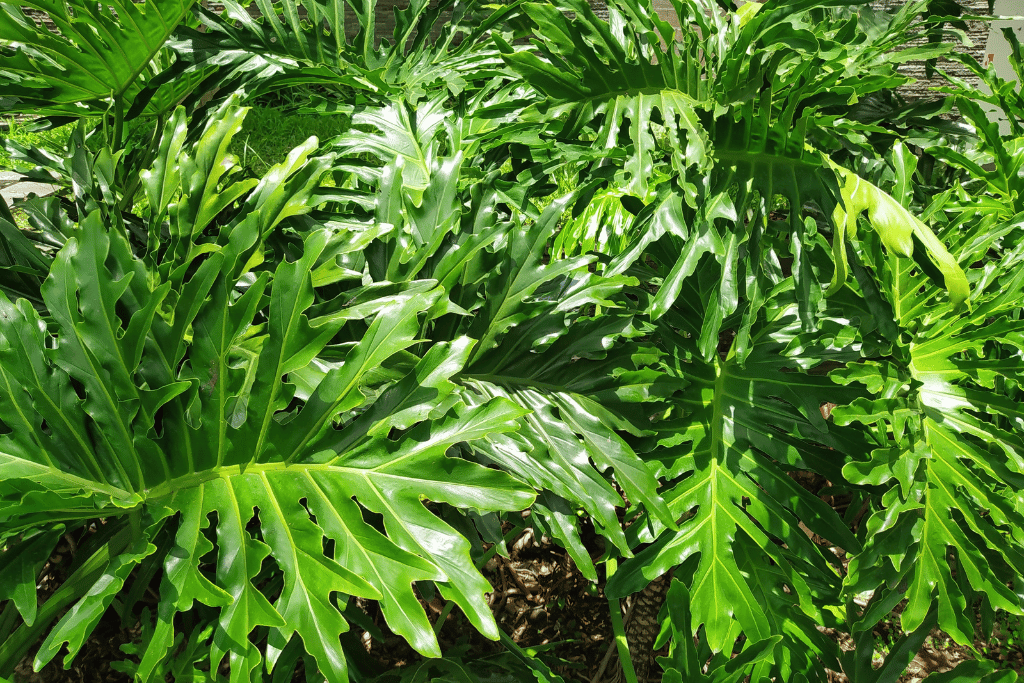
Philodendrons are native to the tropical regions of central and South America and are widely recognized for their large glossy leaves and ability to grow in low-light conditions. Some common varieties of Philodendron include Philodendron bipinnatifidum, Philodendron hederaceum, and Philodendron selloum.
What makes Philodendrons the best live pot plants for chameleons is that they offer a climbing surface for them to explore. Because of the nature of these animals, their ability to climb around increases their physical health and mental well-being.
Philodendron plants can help to stabilize the humidity levels in a chameleon’s enclosure. Chameleons require high humidity to keep their skin healthy and prevent dehydration, and Philodendron plants are known for their ability to absorb moisture from the air. This can help to maintain humidity levels in the enclosure.
Because chameleons are curious animals, Philodendrons are a safe plant for them to be around. They are non-toxic to chameleons and other pets, so by keeping them in the enclosure, you will avoid any risk of accidental poisoning.
Philodendrons are a large family of plants that come in many shapes and sizes, making them some of the best plants for veiled chameleons and panther chameleons. They are typically easy to care for and thrive in various lighting conditions. Many Philodendrons also produce aerial roots, which chameleons love to climb on!
5. Bromeliad
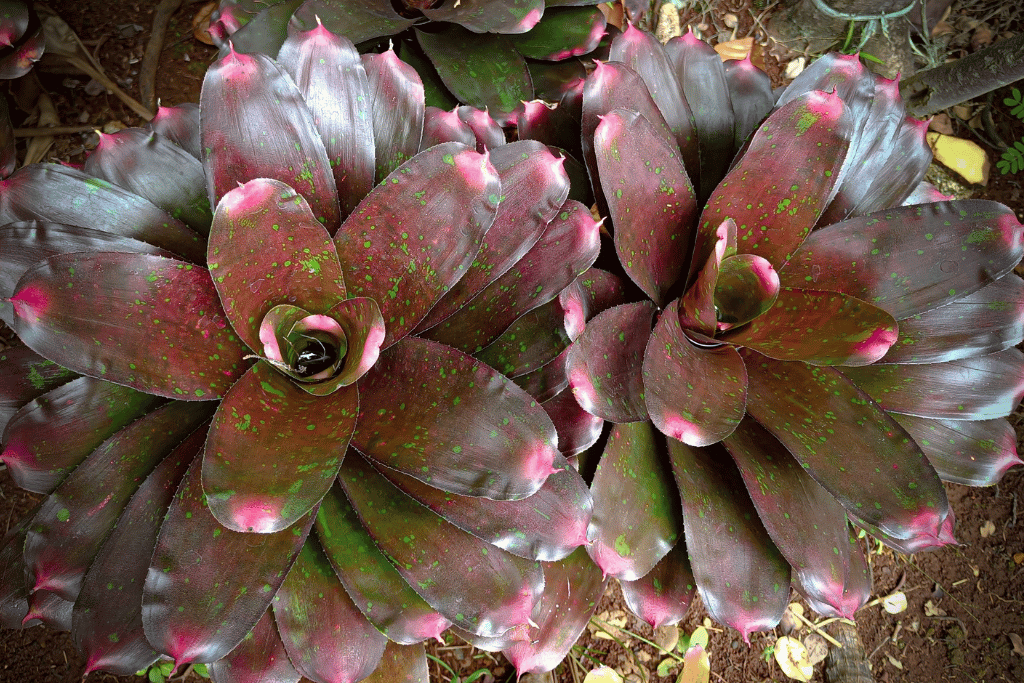
This family of plants includes a variety of species, including the pineapple! Many species make the best live pot plants for chameleons as they have thick, sturdy foliage for climbing.
Some species are safe for chameleons to have in their enclosure, and we’ll have a look at these.
Neoregelia is a genus of bromeliads and has many species that are safe for chameleons, including Neoregelia carolinae, Neoregelia lillputiana, and Neorgelia spectabillis.
Cryptanthus are small bromeliads and are often used as ground covers in chameleon enclosures, and they are safe for chameleons to be around.
Tillandsia is a genus of bromeliads and is also known as air plants; they are safe for chameleons and easy to care for. They can be mounted on branches and decorations in the enclosure.
Bromeliads are native to the tropical regions of the Americas and are known for their colorful, long-lasting flowers and their ability to grow in humid environments. These humidity-loving plants can provide a source of water for chameleons.
Some species of this plant have a central cup-like structure in which water can collect. Chameleons can drink from this water source, which helps to prevent dehydration and provide a source of natural hydration.
Chameleon Conclusion
Many species of chameleons are native to tropical climates, so be sure to choose plants that require similar care and light levels if you want your pet to stay happy and healthy.
Additionally, opt for non-toxic varieties such as Pothos or Philodendron that won’t harm your reptile friends’ skin when they come into contact with them. With a little bit of effort, you should have no problem finding great options for your plant-loving friend!
Curious About Other Plants to Add to Your Collection?
Head straight over to our Planting 101 pages, where you’ll find all the info you need to keep your green friend’s ship shape.
We love to share all our knowledge with you and have kept our pages well-stocked with all you need to be the best plant parent!


